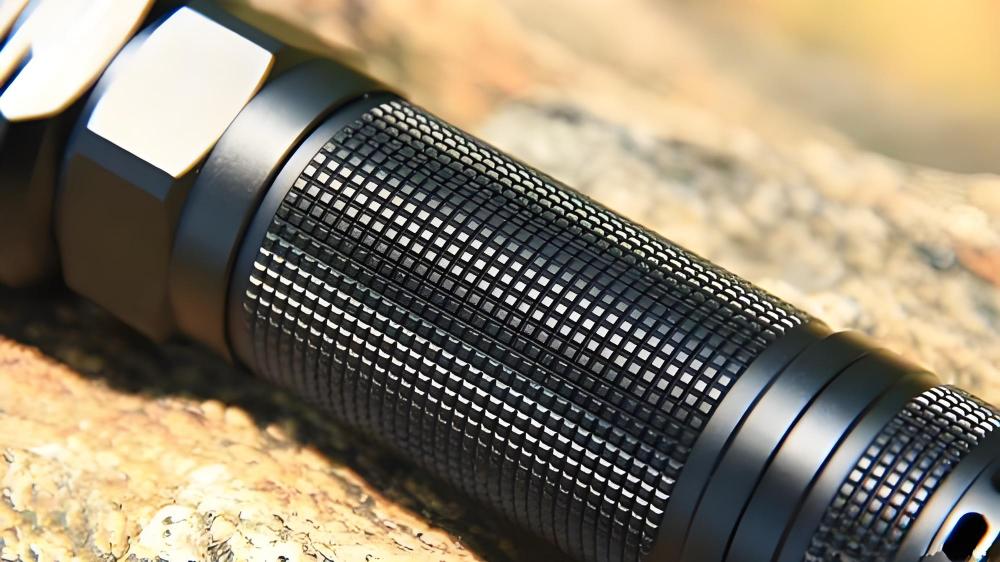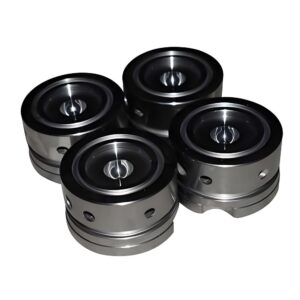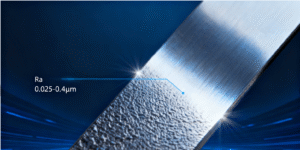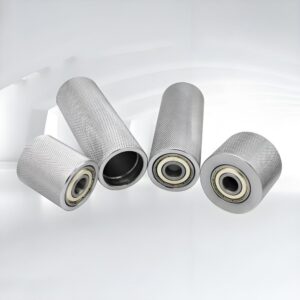In modern manufacturing, the quality of every detail can affect the performance and usability of a product. One technique that plays a subtle but important role is knurling. This process creates patterned textures on the surface of cylindrical components, providing better grip, functional benefits, and even a professional look.
Knurling is used in a variety of industries, from automotive and aerospace to hand tools and consumer electronics. By understanding the fundamentals of knurling, manufacturers can ensure that their parts not only meet functional requirements but also stand out in terms of quality and usability.
What is Knurling?
Knurling is a machining process that impresses a pattern onto a workpiece surface by pressing a hardened roller with teeth against it. Unlike milling or turning, which remove material, knurling displaces material outward, forming ridges that create a textured pattern.
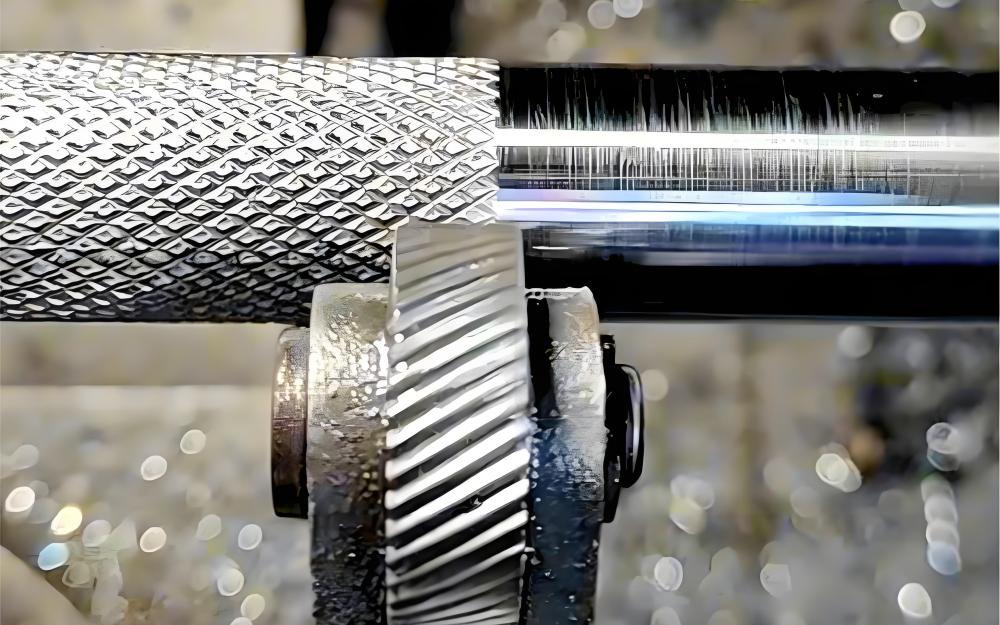
The main purposes of knurling include:
- Improving grip: Especially important for handles, knobs, and other manually operated components.
- Aesthetic enhancement: Adds a professional, polished look to products.
- Functional fitting: Provides interference fits for assembly or press-fit parts.
It is primarily applied to cylindrical surfaces, making it a finishing operation rather than a shaping process.
Common Knurling Patterns
Different patterns are used depending on the application and desired effect:
Straight Knurl
Features lines running parallel to the axis of the cylinder. Often used where axial grip is required, such as sliding rods or tool handles.
Diagonal Knurl
Lines are angled across the workpiece, providing moderate grip and a clean appearance. It is frequently chosen for decorative applications.
Diamond Knurl
The most common type, formed by intersecting diagonal lines. It offers superior grip, making it ideal for hand tools, knobs, and shafts.
Choosing the right pattern ensures both functional performance and aesthetic appeal.
Tools and Equipment for Knurling
Knurling requires specialized tools called knurling wheels or rollers. These are mounted on tool holders and pressed against the workpiece during machining.
Key considerations include:
- Tool Design: Hardened steel or carbide rollers with precise teeth.
- Machine Compatibility: Usually performed on a lathe, although CNC machines increasingly handle knurling for precision and repeatability.
- Workpiece Material: Metals such as steel, stainless steel, aluminum, and brass are ideal, as they respond well to material displacement.
Correct tool selection and setup ensure that the knurled pattern is sharp, consistent, and durable.
How the Knurling Process Works
A standard knurling operation follows these steps:
- Preparing the Workpiece The cylinder is machined to the target diameter and cleaned to remove debris or oil, ensuring a clear pattern.
- Tool Alignment Accurate alignment of the knurling tool with the workpiece axis prevents uneven or distorted patterns.
- Engaging the Tool The roller is gradually pressed into the surface. Unlike cutting, the process displaces the material to form the texture.
- Feed and Speed Control Maintaining appropriate spindle speed and feed rate is essential. Too fast can cause tearing, while too slow can lead to inconsistent patterns.
- Cooling and Lubrication Cutting fluids or oils reduce friction, prevent heat buildup, and prolong tool life.
Benefits of Knurling
Knurling provides several advantages in manufacturing:
- Enhanced Grip and Safety: Reduces slipping on hand-operated components.
- Visual Appeal: Creates a professional, finished look.
- Functional Fit: Enables press-fit assemblies without adhesives.
- Versatility: Applicable to tools, mechanical components, and consumer products.
- Cost Efficiency: Simple setup, repeatable results, and low operational costs make it ideal for production environments.
Limitations and Challenges
Despite its advantages, knurling has limitations:
- Limited to Cylindrical Surfaces: Flat or irregular surfaces cannot be knurled effectively.
- Tool Wear: Over time, knurling rollers degrade, affecting pattern quality.
- Workpiece Stress: Excessive pressure can distort or damage parts.
- Setup Sensitivity: Misalignment may lead to inconsistent results.
Proper planning, tooling, and operation help mitigate these challenges.
Troubleshooting Common Knurling Issues
Some issues may arise during knurling operations:
- Pattern Fuzziness or Shallow Impressions: Usually caused by worn tools or insufficient pressure.
- Surface Damage: Can result from too much feed, high speed, or inadequate lubrication.
- Pattern Misalignment: Often the result of incorrect tool setup or poor spindle alignment.
By carefully monitoring these factors, manufacturers can maintain high-quality knurled finishes consistently.
Applications Across Industries
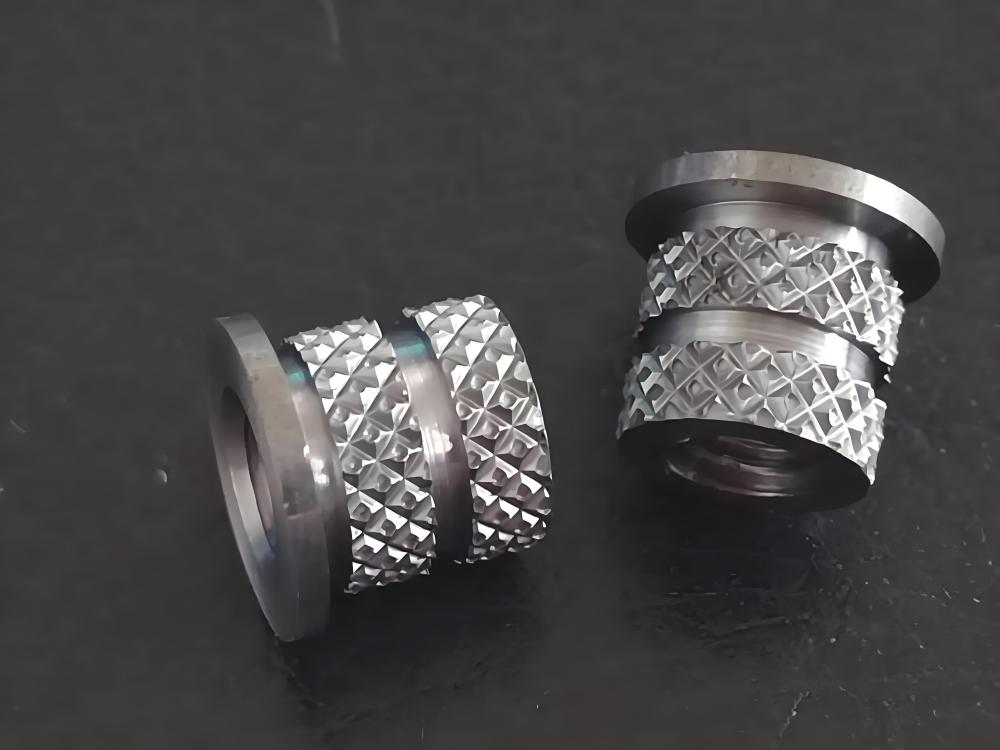
Knurling is widely used for both functional and decorative purposes:
- Hand Tools: Screwdrivers, wrenches, and pliers for slip-resistant handles.
- Automotive Parts: Shafts, knobs, pedals, and adjustment components.
- Medical Instruments: Surgical tools with secure grip handles.
- Consumer Electronics: Camera lenses, knobs, and adjustment rings.
- Industrial Equipment: Shafts, rollers, and fasteners requiring interference fits.
Its adaptability makes knurling a reliable choice across multiple sectors.
Future Trends in Knurling
Manufacturing continues to demand higher precision and efficiency. Trends shaping the future of knurling include:
- Automation: CNC-controlled knurling for consistent results at scale.
- Advanced Tool Materials: Carbide and coated rollers to extend tool life.
- Customization: Unique patterns for branding and functional design.
- Smart Manufacturing Integration: Sensors and monitoring for quality assurance in real-time.
These trends ensure that knurling remains relevant in modern precision manufacturing.
Why Partner with Precionn
Knurling is a small but essential part of the manufacturing process. By providing better grip, functionality, and visual appeal, it enhances both usability and product quality. From industrial tools to precision electronics, knurling ensures components meet practical and aesthetic standards.
For companies seeking reliable and high-quality machining services, Precionn offers expertise in precision processes including knurling, drilling, reaming, and more. Serving international clients, Precionn combines advanced technology with professional craftsmanship to deliver parts that meet stringent performance and design requirements.

